
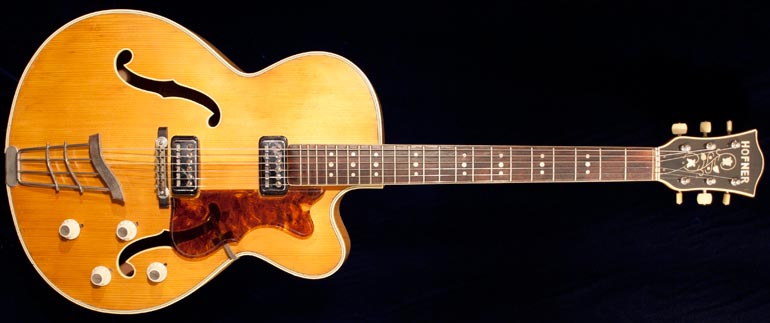
The Hofner President was a German semi-acoustic electric guitar produced by Hofner at it's Bubenreuth plant, specifically for distribution by Selmer in the UK. It was a dual pickup instrument, well-built and relatively popular at a time when British guitar manufacture was in it's infancy, and American guitars were difficult to source and generally unaffordable. Two models were available: the standard full-body (3 1/4" deep) and a Hofner President thinline (2" deep). These were roughly equivalent to two European models, the 457 and thinline 4570. See the main page for general details of the Hofner President.
Hollow body Hofner guitars have an absolutely fabulous resonance to them, something you notice immediately when you play them, even before you plug them in. This is a lovely sounding guitar, with a good tonally range and a very playable neck.
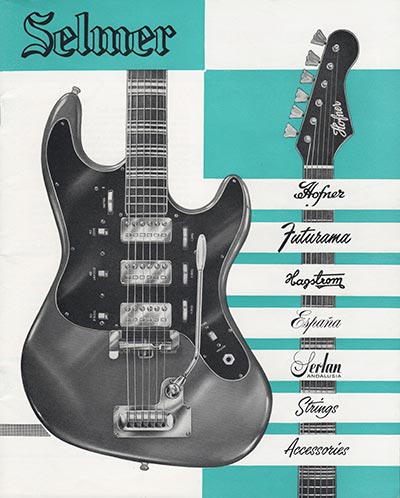
The electric version of the President was available from 1956, so by the time this example was shipped (early 1965) the guitar had changed somewhat - not really in terms of design, but certainly with regards hardware. Numerous upgrades were instituted in 1963, bring the Hofner instrument in line with other contemporary guitars - these changes are detailed in the 'closer look' section below. This guitar is identical to the full-body, blonde finished 5122/06 President as shown in the 1964 Selmer catalog. It has the 511 Staple pickups (described in '64 as Nova Sonic, double coil, double pole pickups), each with a volume and tone control mounted directly onto the guitar's body.
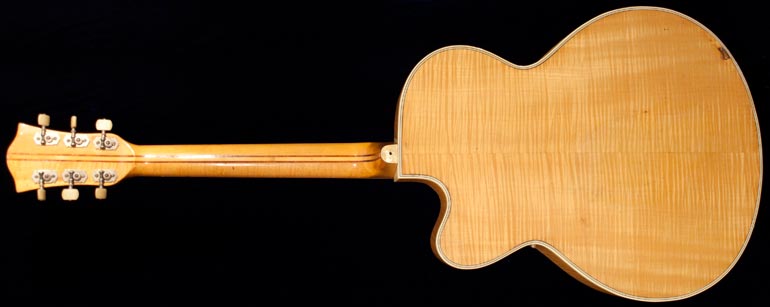
This guitar is finished in Blonde (clear nitrocellulose), with a bound body (front and back) neck, headstock and f-holes. The body binding is 6-ply black and white (b-w-b-w-b-w), though it is white single ply elsewhere. At this point, the President featured a Venetian cutaway - soon to change to a sharper Florentine cutaway at towards the end of 1965 (see a 1967 Hofner President). This is one of the last Venetian cutaway Presidents. The rosewood fretboard is fitted with triple dot neck position markers.
Selmer Hofner guitars were given serial numbers, unlike the majority of Hofners sold by other distributors. Shipping data for Selmer-distributed guitars does exist (though apparently incomplete) here - this data suggests 248 Presidents were distributed by Selmer in 1965 - with serial numbers in the range 8728-8976 - i.e. 248 instruments that year. The serial number on this guitar is in the paper label within the soundhole - #8741; making this the 13th Hofner President of 1965. Further dating information is available by examining the hardware, and potentiometer codes. The pots fitted to this guitar have codes 414, 464 and 474 on their reverse (see images below): signifying the 41st, 46th and 47th weeks of 1964.
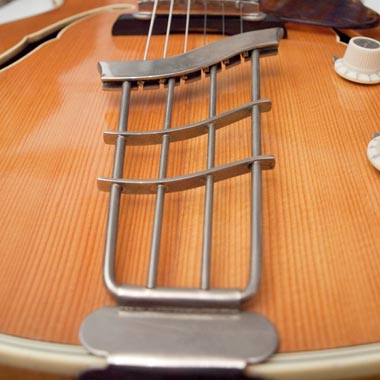
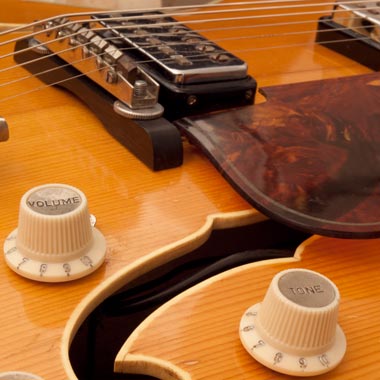
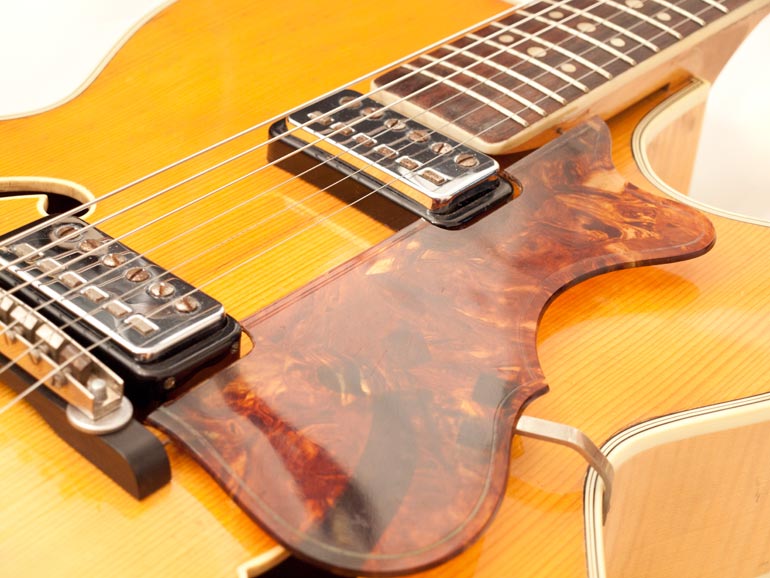
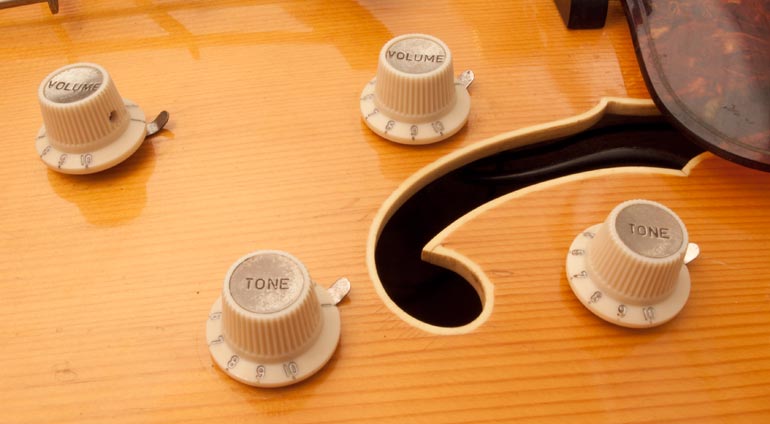
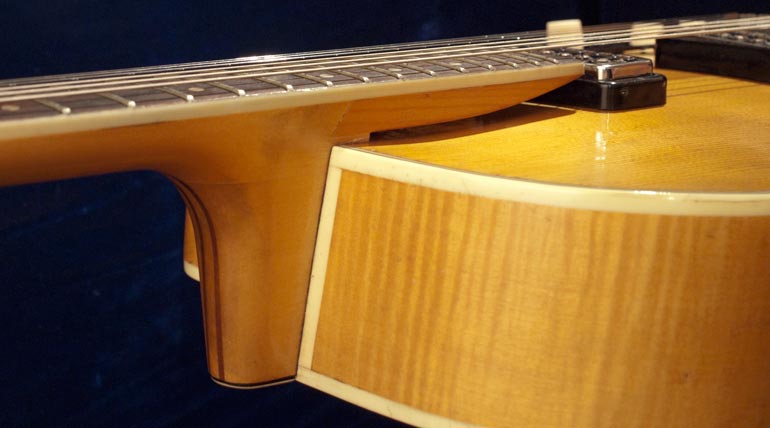
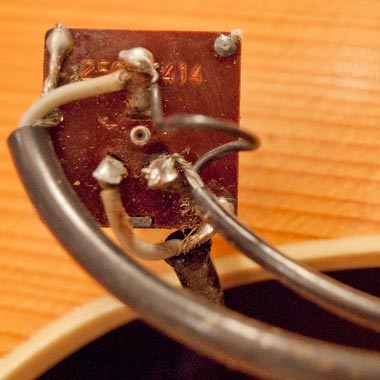
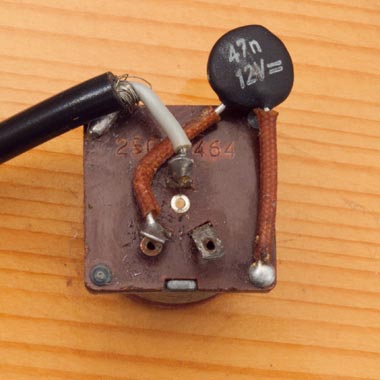
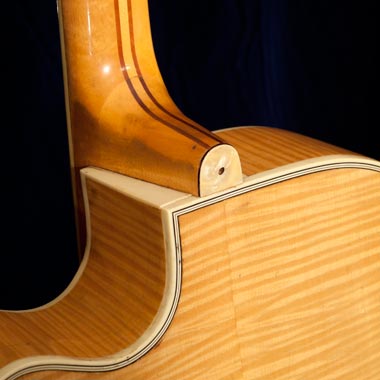
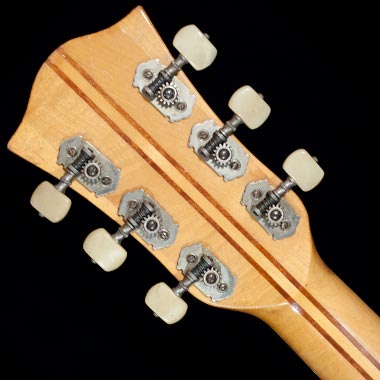
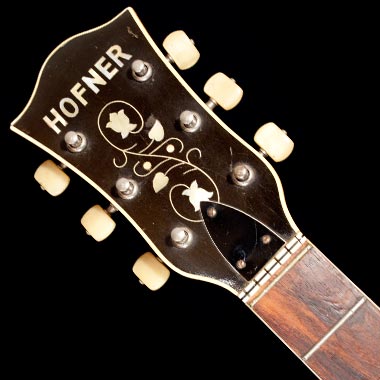
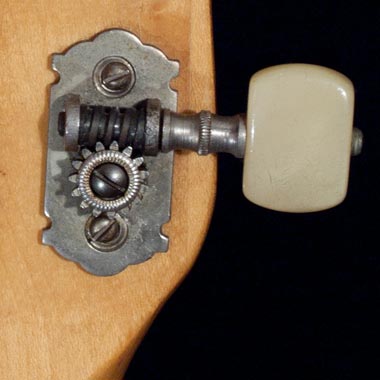
The dual 511 'double coil' (i.e. humbucking) pickups are mounted in typical early 60s Hofner style: i.e. there are no cutouts interfering with top vibrations, rather pickups are surface mounted with plastic surrounds. These no doubt add to the fore-mentioned acoustic resonance of such instruments, though the ability to adjust pickup height is not as accurate as in some other guitars with spring mounted pickups. The four images below show how these pickups are mounted, with just a small hole for the lead to reach the internal electrics. The pickups themselves each have adjustable pole pieces (flat head screw)
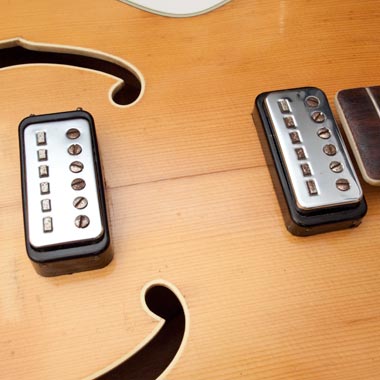
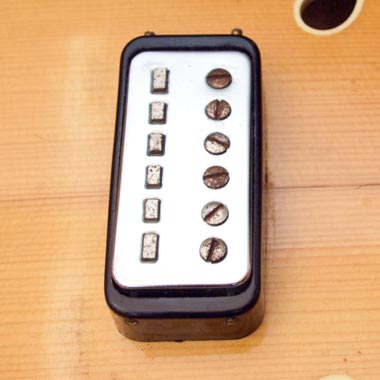
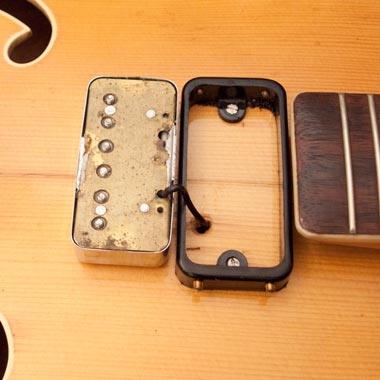
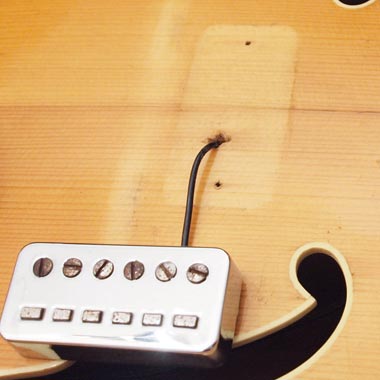
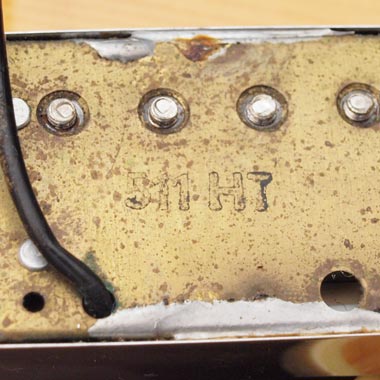
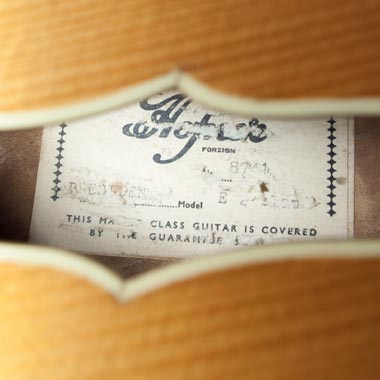
The Hofner President is a very nice guitar - great for jazz and blues, but with it's maple and spruce construction punchy enough for many rock guitarists too. It is a large bodied guitar, but still pretty light - easily half the weight of a Les Paul, for example and not especially prone to feedback. As mentioned this guitar has a wonderful resonance, and sounds great unplugged, as well as electrified. The biggest downside (for me at least) are the tone controls. Remembering which direction to turn them is not a big deal, but the associated volume drop is a little greater than one would like, and the tone cut is not as great. This guitar doesn't do 'woman-tone' quite as well as you'd like/expect! No doubt these 'faults' could be rectified with some electrical upgrades, but on an original vintage guitar, perhaps better just to live with it.
$1305
$1200
$1700
$1600
£995
€2500
£650
£1250
£976
£895
€1500
£1699
£670
£1599
£1231
£425
€1280
£966
£619
£157